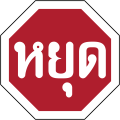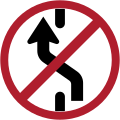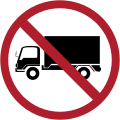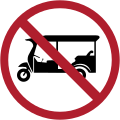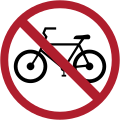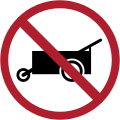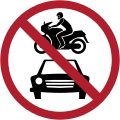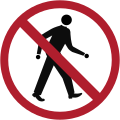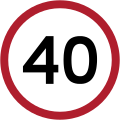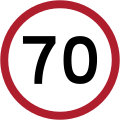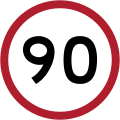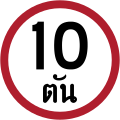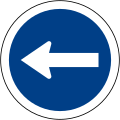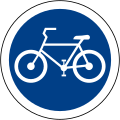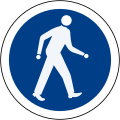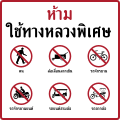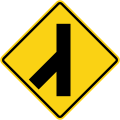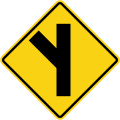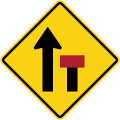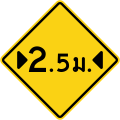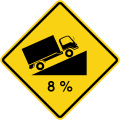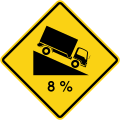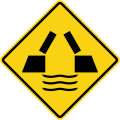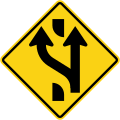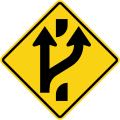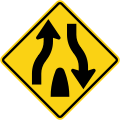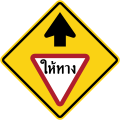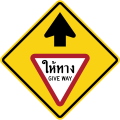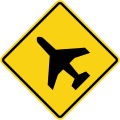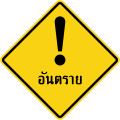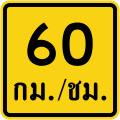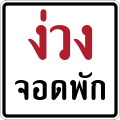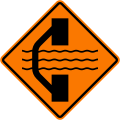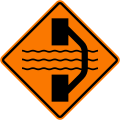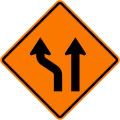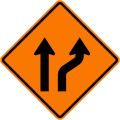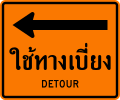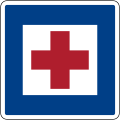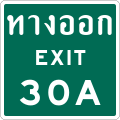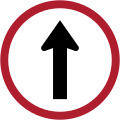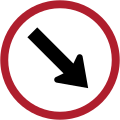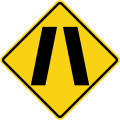



Road signs in Thailand are standardized road signs similar to those used in other nations but much of it resembles road signage systems used in South American countries with certain differences, such as using a blue circle instead of a red-bordered white circle to indicate mandatory actions. [1] Until the early 1980s, Thailand closely followed American, European, Australian, and Japanese practices in road sign design, with diamond-shaped warning signs and circular restrictive signs to regulate traffic. The Department of Railway maintains a standard on the typeface used in the sign, with custom made type for Thai text, unofficially named "Thang Luang" (อักษรทางหลวง) and a small derivation of FHWA Series fonts ("Highway Gothic") typeface, which is used on American road signage, for Latin text. [2] In most Bangkok Metropolitan Area's routes, TS Lopburi is still used.
Contents
- History
- Regulatory signs
- Priority Signs
- Prohibitory or Restrictive Signs
- Mandatory Signs
- Other regulatory signs
- General regulatory signs
- Mandatory signs for bicycle paths
- Optional signs
- Warning signs
- Curves and Turns
- Intersections
- Roundabout
- Road narrows
- Narrow bridge
- Lane transitions
- Railway crossing
- Lane width restrictions
- Lane height restrictions
- Hills and Grades
- Lane conditions
- Opening bridge
- Lane shiftings
- Lane mergings
- Divided highways
- Turning back
- Two-way traffic
- Advance traffic control
- No passing zone
- Lane split, Curve and Hazard markers
- Alternate merging
- Supplementary plates
- Speed camera zone warning signs
- Emergency stop warning sign (Standard form of the Department of Highways)
- Warning signs on steep slopes. for heavy trucks (Standard form of the Department of Highways)
- High hanging warning sign (Mast arm) (Standard type of the Department of Rural Roads)
- Water overflow warning sign (Standard form of the Department of Rural Roads)
- Warning signs for safety facilitation and improvement of dangerous points. In the case of installing a vehicle warning device entering an intersection (Standard form of the Department of Rural Roads)
- Railway warning sign (Standard road work form for local administrative organizations, Department of Rural Roads)
- Combination signs
- Miscellaneous
- Temporary signs
- Highways
- Tolled expressway and highway signs
- National Highway
- Highway signs
- Informational signs
- Kilometer signs
- Exit number signs
- Road name signage
- Symbols
- Curb markings
- Sign vocabulary
- Retired signs
- See also
- References
Thai traffic signs use Thai, the national language of Thailand, and distances and other measurements are expressed in compliance with the International System of Units. However, English is also used for important public places such as tourist attractions, airports, railway stations, and immigration checkpoints. Both Thai and romanizations are used on directional signage.
Thailand is a signatory to the 1968 Vienna Convention on Road Signs and Signals, but has yet to fully ratify the convention. [3]
